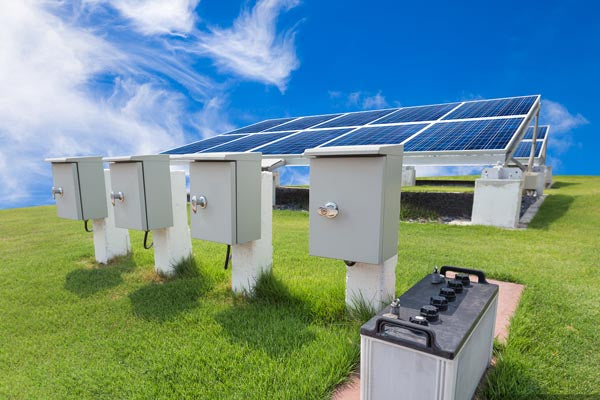
Solar energy has emerged as a sustainable and cost-effective solution for powering our homes and businesses. As the demand for renewable energy sources increases, so does the need for efficient energy storage systems. Solar battery storage systems are gaining popularity due to their ability to store excess solar energy generated during the day and utilize it during periods of low sunlight or high energy demand. In this article, we will explore the cost considerations associated with solar battery storage systems, helping you make an informed decision for your energy needs.
1. The Basics of Solar Battery Storage Systems
To understand the cost implications, it's crucial to have a basic understanding of how solar battery storage systems work. These systems typically consist of solar panels, an inverter, and a battery bank. During daylight hours, the solar panels generate electricity, which can either be used immediately or stored in the battery for later use. The inverter converts the direct current (DC) electricity from the solar panels into alternating current (AC) electricity for use in your home. The battery bank stores the excess energy generated during the day, ensuring a continuous power supply when solar generation is low or during power outages.
2. Factors Influencing Solar Battery Storage System Cost
Several factors impact the cost of installing and maintaining a solar battery storage system. Understanding these factors will help you assess the overall investment required:
a. Battery Capacity: The capacity of the battery determines the amount of energy it can store. Higher capacity batteries cost more but provide greater energy backup during periods of low sunlight. Assess your energy consumption patterns and consider the battery capacity that best suits your needs.
b. Battery Type: Different battery chemistries are available for solar storage systems, such as lithium-ion, lead-acid, and flow batteries. Lithium-ion batteries are widely used due to their high efficiency and longer lifespan, albeit at a higher cost. Lead-acid batteries are more affordable but have shorter lifespans and lower efficiency. Consider your budget and performance requirements when choosing a battery type.
c. Installation Costs: The installation costs of a solar battery storage system include equipment, labor, and any necessary electrical upgrades. The complexity of the installation, the size of the system, and local permitting requirements can influence the overall installation cost. Obtain multiple quotes from reputable installers to compare prices and ensure a competitive offer.
d. System Integration: If you already have a solar PV system installed, integrating a battery storage system may require additional equipment and labor costs. Compatibility between the existing solar system and the battery storage system is essential. Consult a professional installer to assess the feasibility of integration and associated costs.
e. Incentives and Rebates: Government incentives and rebates can significantly reduce the cost of installing a solar battery storage system. Research available programs and tax credits in your area to leverage financial benefits that can make the investment more affordable.
3. Cost Analysis and Return on Investment
While the upfront cost of a solar battery storage system may seem significant, it is essential to consider the long-term savings and return on investment (ROI). Factors to consider include:
a. Reduced Electricity Bills: By storing excess solar energy and utilizing it during high-demand periods or at night, you can reduce reliance on the grid and save on electricity bills. The extent of savings depends on your energy consumption, battery capacity, and local electricity rates.
b.Grid Independence: Solar battery storage systems offer the advantage of grid independence, allowing you to power your home during grid outages or emergencies. The peace of mind and security provided by this energy backup can be invaluable.
c. Lifespan and Warranty: Consider the lifespan of the battery and the warranty provided by the manufacturer. Longer-lasting batteries with comprehensive warranties may have higher upfront costs but can provide greater savings in the long run.
d. Environmental Benefits: Investing in solar battery storage systems contributes to a cleaner environment by reducing reliance on fossil fuel-based power generation. Lowering your carbon footprint can be an essential consideration when evaluating the overall value of a solar battery storage system.
Conclusion
Solar battery storage systems offer a sustainable and reliable solution for harnessing solar energy and ensuring uninterrupted power supply. While the upfront costs may vary depending on factors such as battery capacity, type, installation, and incentives, it's important to consider the long-term savings and benefits they provide. By assessing your energy needs, evaluating available options, and consulting with reputable installers, you can make an informed decision that aligns with your budget and energy goals. Embracing solar battery storage systems not only reduces your reliance on the grid but also contributes to a greener and more sustainable future.
Investing in solar battery storage systems is a step toward a more sustainable future and a greener planet. With their ability to store excess solar energy and provide reliable power during periods of low sunlight, these systems offer numerous benefits. While the upfront costs may vary depending on factors such as battery capacity, type, installation, and incentives, it's important to consider the long-term savings and the positive environmental impact. By evaluating your energy needs, exploring available options, and consulting with reputable installers, you can make an informed decision that aligns with your budget and energy goals. Solar battery storage systems not only reduce your reliance on the grid but also contribute to a greener and more sustainable future.


0 comments